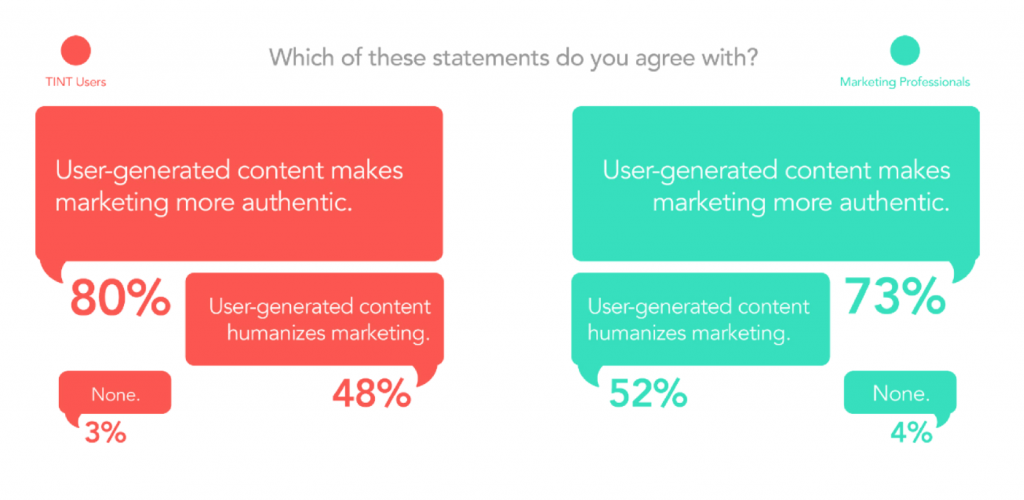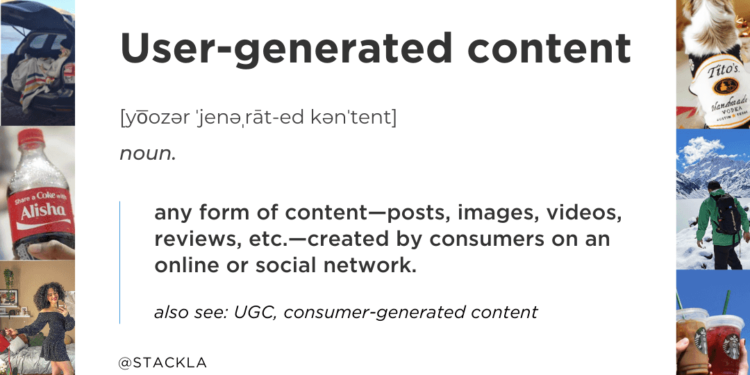You’re about to discover the power of user-generated content in marketing. It’s a strategy that involves leveraging the content created by your own customers, fans, and followers to promote your brand and engage with your target audience. By harnessing the enthusiasm and creativity of your community, you can build trust, increase brand awareness, and drive customer loyalty. In this article, we’ll explore effective ways to incorporate user-generated content into your marketing campaigns, ensuring that your brand stands out from the crowd and creates meaningful connections with your customers. Let’s dive in and explore the incredible potential of user-generated content!
What is User-Generated Content
Definition of User-Generated Content
User-generated content, also known as UGC, refers to any form of content that is created by the users of a product, service, or brand. This content can take many forms, including photos, videos, reviews, testimonials, blog posts, and social media posts. Instead of being created and distributed by the brand itself, user-generated content is produced by the consumers or fans of the brand. It is a powerful marketing tool that helps build trust, increase brand awareness, and engage with the target audience.
Types of User-Generated Content
There are various types of user-generated content that a brand can leverage in their marketing strategy. Some common types include:
- Reviews and Testimonials: Customers sharing their experiences, feedback, and recommendations about a product or service.
- Social Media Posts: Users creating posts, tags, or mentions related to a brand or campaign on social media platforms like Instagram, Twitter, or TikTok.
- Photos and Videos: Customers sharing visual content showcasing their use or enjoyment of a brand’s products or services.
- Blog Posts and Articles: User-created content in the form of blogs or articles that provide insights, opinions, or tutorials related to a brand or its offerings.
- Contests and Challenges: Encouraging users to participate in contests or challenges where they create content that best represents a brand or its values.
By tapping into these different types of user-generated content, brands can tap into the creativity and authenticity of their audience, amplifying their reach and building a strong community around their products or services.
Benefits of Using User-Generated Content in Marketing
Using user-generated content in marketing offers several benefits for brands:
- Increased Trust and Authenticity: User-generated content is perceived as more authentic, genuine, and trustworthy compared to branded content. People trust the opinions and experiences of fellow consumers, leading to increased brand trust and credibility.
- Cost-Efficiency: Creating user-generated content is often more cost-effective than producing branded content. Brands can leverage the creativity and resources of their audience without significant expenses.
- Higher Engagement: User-generated content encourages active participation and engagement from your audience. It creates a sense of community and encourages users to interact and share their experiences.
- Enhanced Reach and Awareness: When users create and share content about a brand, it extends the brand’s reach to their social networks. This organic sharing can lead to increased brand visibility and awareness.
- Valuable Insights: User-generated content provides valuable insights into customer preferences, behaviors, and trends. Brands can gather feedback, analyze content themes, and gain a deeper understanding of their audience.
Incorporating user-generated content into a marketing strategy can be a powerful way to leverage the voices and experiences of your customers, resulting in a stronger connection between the brand and its audience.
Choosing the Right Platform for User-Generated Content
Identify Your Target Audience
Before selecting a platform for user-generated content, it’s crucial to identify and understand your target audience. Consider their demographics, interests, and preferred online platforms. Conduct market research, analyze customer data, and engage in social listening to gain valuable insights. Understanding your audience will help you choose a platform where they are most active and likely to engage with user-generated content.
Research Popular Platforms
Once you have a clear understanding of your target audience, research the popular platforms where user-generated content thrives. Different platforms cater to different demographics and content types. For example:
- Instagram: Known for visual content, particularly photos and videos. It is popular among millennials and younger audiences.
- YouTube: Ideal for video-based user-generated content, tutorials, and product reviews. It has a diverse and global user base.
- Twitter: Effective for real-time user-generated content, discussions, and hashtag campaigns. It is particularly popular for timely and trending topics.
- Blogs and Forums: These platforms are beneficial for long-form user-generated content and discussions. They are suitable for niche audiences and specific topics.
Researching the popular platforms will help you determine the platforms where your target audience is actively creating and engaging with user-generated content.
Evaluate Platform Features
Once you have identified potential platforms, evaluate their features and capabilities that align with your marketing goals and objectives. Consider the platform’s:
- User-Friendliness: Is the platform easy for users to navigate and create content?
- Reach and Accessibility: How large is the platform’s user base? Is it accessible across various devices?
- Content Management: Does the platform allow easy moderation, curation, and organization of user-generated content?
- Social Sharing: Can users easily share their content on other social media platforms?
- Analytics and Insights: Does the platform provide metrics and data for tracking user engagement and success?
Evaluating these platform features will ensure you choose the most suitable platform to foster user-generated content and engage with your target audience effectively.
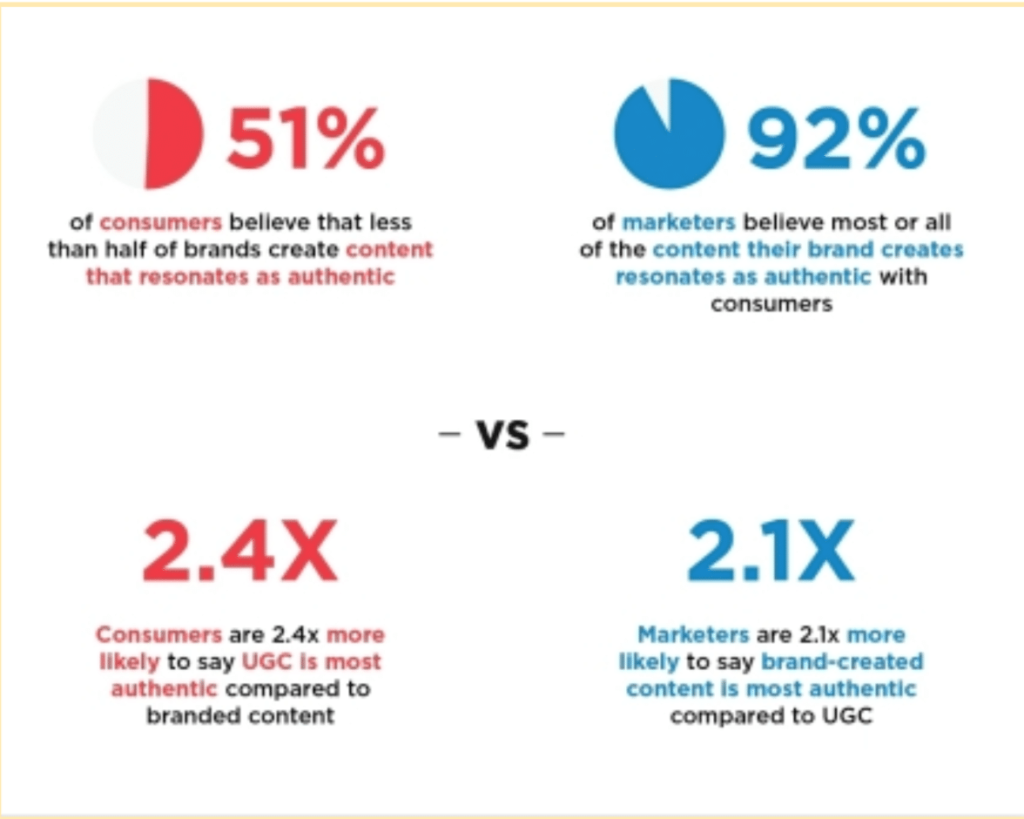
Creating a User-Generated Content Campaign
Set Clear Goals and Objectives
Before launching a user-generated content campaign, it is essential to set clear goals and objectives. Define what you aim to achieve through the campaign, such as:
- Increasing brand awareness and visibility.
- Driving user engagement and interaction.
- Enhancing customer loyalty and advocacy.
- Gathering valuable feedback and insights from customers.
Setting concrete goals will help you stay focused, measure success, and optimize your user-generated content campaign effectively.
Define Your Campaign Hashtag
A campaign hashtag is a key element in promoting and organizing user-generated content. It should be unique, relevant to your brand or campaign, and easy for users to remember and include in their posts. The hashtag should align with your campaign goals and objectives and resonate with your target audience. A well-chosen campaign hashtag can help you track and curate user-generated content effectively.
Establish Rules and Guidelines
To ensure a smooth and positive user-generated content campaign experience, establish clear rules and guidelines. These guidelines should address:
- Content Guidelines: Specify the type of content allowed, any format requirements, and guidelines for appropriate and respectful content creation.
- Legal Considerations: Address copyright, trademark, and intellectual property rights of both the brand and the users. Clearly communicate the terms and conditions for content submission and usage rights.
- Community Guidelines: Outline expected behavior, language, and restrictions to maintain a positive and inclusive community environment.
By establishing clear rules and guidelines, you create a framework that encourages creativity, while also protecting the brand and fostering a positive user experience.
Encouraging User Participation
Creating an Incentive
To encourage user participation in your user-generated content campaign, create incentives that motivate users to engage. These incentives can include:
- Contests and Prizes: Offer rewards or giveaways for the best user-generated content, such as cash prizes, free products, or exclusive discounts.
- Recognition and Exposure: Highlight and showcase exceptional user-generated content, giving users a chance to be recognized by the brand and gain exposure to a wider audience.
- Social Collaboration: Foster collaboration among users by encouraging them to create content together, participate in challenges or tag others, increasing their motivation to participate.
By providing incentives, you create a sense of excitement and reward for users, further driving their motivation to actively participate in your user-generated content campaign.
Streamlining the Submission Process
Make it as easy and seamless as possible for users to submit their user-generated content. Streamlining the submission process can include:
- Simplified Content Submission: Provide clear instructions and user-friendly tools for users to submit their content. Consider using online forms, dedicated hashtags, or tagging features.
- Clear Content Requirements: Specify the desired content format, quality, and any other guidelines to ensure user-submitted content meets your requirements.
- Accessibility: Ensure that users can easily access the submission channels, whether it’s through a website, social media platform, or dedicated app.
By streamlining the submission process, you remove barriers and friction points that might discourage users from participating, thus increasing the quantity and quality of user-generated content.
Promoting Participation via Social Media
Leverage social media platforms to promote user participation in your campaign. Take advantage of the following strategies:
- Social Media Influencers: Collaborate with influencers or brand advocates who align with your campaign goals. Encourage them to create and share user-generated content, inspiring their followers to participate as well.
- Hashtag Campaigns: Promote your campaign hashtag across social media platforms, encouraging users to include it in their posts. Regularly engage with posts that use the hashtag to motivate others.
- Share and Highlight User Content: Share and feature user-generated content on your brand’s social media accounts, giving users recognition and creating a sense of community.
By utilizing social media as a platform for promoting participation in your user-generated content campaign, you can harness the power of viral sharing and engagement.
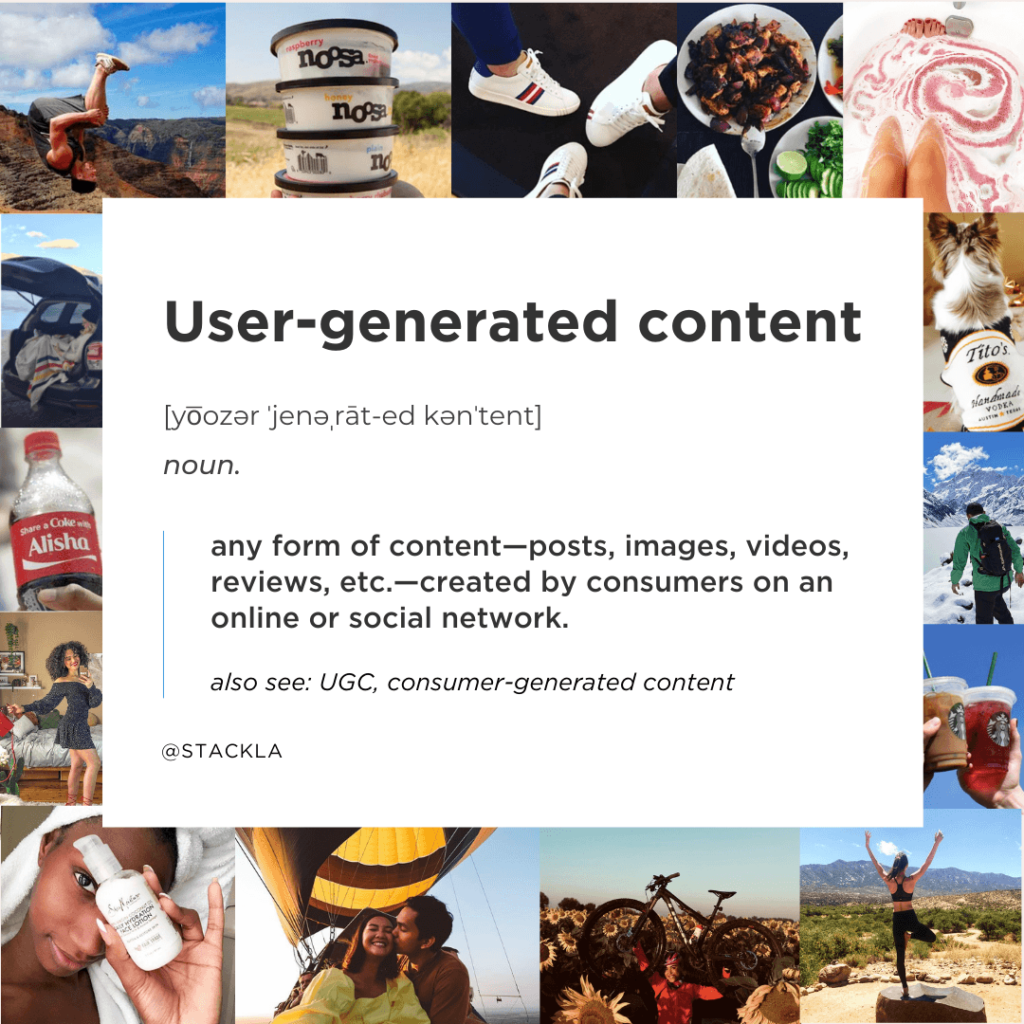
Engaging with User-Generated Content
Moderating and Curating Content
Moderation and curation of user-generated content are crucial to ensure quality, authenticity, and alignment with your brand values. Establish a moderation process that involves:
- Reviewing and Approving: Regularly review and approve user-generated content before featuring or sharing it. Ensure it complies with your content guidelines and is appropriate for your target audience.
- Curating and Organizing: Curate and organize user-generated content to showcase the best examples and create a meaningful user experience. Consider creating content collections or galleries on your website or social media profiles.
By moderating and curating user-generated content, you maintain control over the content that represents your brand, while also showcasing the creativity and diversity of your audience.
Responding to User Comments and Feedback
Engagement with your audience is key to building a strong relationship and fostering a sense of community. Promptly respond to user comments and feedback on your user-generated content. Show appreciation for their contributions, answer any questions, and address any concerns or issues raised. This active engagement demonstrates that you value and value your users, increasing their trust and loyalty towards your brand.
Sharing and Repurposing Content
Sharing and repurposing user-generated content across various marketing channels can amplify its impact and reach. Consider the following strategies:
- Sharing on Social Media: Regularly share and promote user-generated content on your brand’s social media accounts. Repost, retweet, or share user-generated content that aligns with your brand image and voice.
- Website Integration: Feature user-generated content on your website, such as testimonials, reviews, or visual galleries. This adds social proof and authenticity to your brand’s online presence.
- Advertising Campaigns: Incorporate user-generated content in your advertising campaigns or sponsored content. The use of real customer experiences and endorsements can enhance your campaign’s effectiveness.
By sharing and repurposing user-generated content, you amplify the voices of your audience, further engaging with your community and driving brand visibility.
Showcasing User-Generated Content
Displaying UGC on Your Website
Your website is a central hub for displaying user-generated content and engaging with your audience. Consider these strategies for showcasing UGC on your website:
- Testimonials and Reviews: Feature customer testimonials and reviews prominently on relevant pages of your website. Highlight the positive experiences and endorsements from satisfied customers.
- Visual Galleries and Interactive Content: Create visually appealing galleries or interactive content sections displaying user-generated photos, videos, or stories. This engages visitors and encourages them to explore further.
- User Spotlights or Interviews: Showcase selected users by featuring their stories, experiences, or interviews. This creates a deeper connection between your brand and your customers.
By strategically integrating user-generated content on your website, you create a dynamic and interactive user experience that strengthens your brand’s credibility and authenticity.
Featuring UGC on Social Media
Social media platforms provide an ideal space for featuring user-generated content due to their interactive and shareable nature. Employ the following tactics:
- Retweets, Shares, and Reposts: Regularly retweet, share, or repost user-generated content that aligns with your brand values and campaign goals. This motivates users to create more content and encourages engagement.
- User-of-the-Week Campaigns: Highlight a different user each week, showcasing their content and stories on your social media accounts. This increases engagement and creates a sense of community.
- Polls and Q&As: Engage with users by conducting polls, Q&A sessions, or live chats on social media. This encourages users to share their thoughts and experiences directly with your brand.
By actively featuring user-generated content on your social media platforms, you foster a sense of community, encourage further engagement, and reinforce the bond between your brand and its audience.
Incorporating UGC in Advertising Campaigns
User-generated content can be a powerful tool when incorporated into your advertising campaigns. Consider these tactics to leverage UGC effectively:
- Video Testimonials: Use user-generated videos showcasing satisfied customers sharing their experiences or recommending your product or service. Video testimonials add authenticity and social proof to your advertising.
- Influencer Collaborations: Partner with influencers who align with your brand and campaign objectives. Encourage them to create user-generated content that promotes your brand or product.
- Sponsored Content: Collaborate with publishers and content creators to feature user-generated content in sponsored articles or blog posts. This leverages the credibility and reach of established media outlets.
By integrating user-generated content into your advertising campaigns, you leverage the creativity and authenticity of your audience to enhance the impact and effectiveness of your marketing efforts.
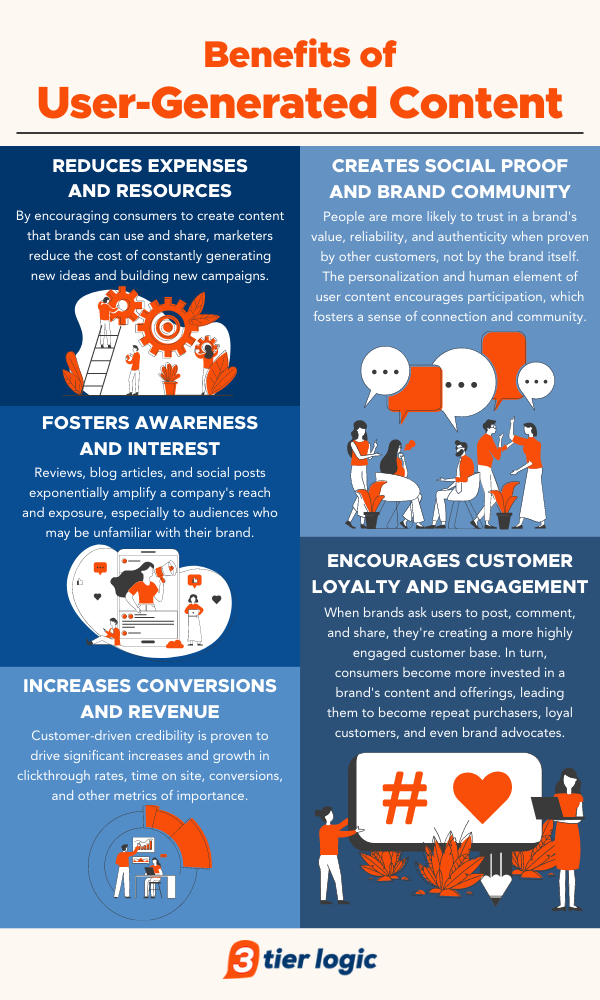
Measuring the Success of UGC Marketing
Defining Key Performance Indicators
To measure the success of your user-generated content marketing efforts, establish key performance indicators (KPIs) aligned with your goals and objectives. Common UGC KPIs include:
- Engagement Metrics: Measure likes, shares, comments, or mentions of your user-generated content to gauge audience engagement and interaction.
- Reach and Impressions: Track the reach and impressions of your user-generated content across different platforms to assess its visibility and exposure.
- Conversion rates: Determine how user-generated content contributes to conversions, such as clicks, sign-ups, or purchases.
- Brand Sentiment and Perception: Monitor any change in brand sentiment or perception through sentiment analysis tools, social media listening, or customer surveys.
By defining clear and relevant KPIs, you can track the impact and effectiveness of your user-generated content marketing strategy accurately.
Utilizing Analytics Software
Analytics software plays a crucial role in collecting and analyzing data related to your user-generated content campaigns. Leverage analytics tools to:
- Track Engagement Metrics: Monitor engagement metrics like likes, comments, or shares across different social media platforms to identify trends and patterns.
- Measure Conversion and ROI: Use analytics to measure conversion rates, click-through rates, or revenue generated from your user-generated content campaigns.
- Monitor User Behavior: Understand user behavior by analyzing data such as time spent on pages, bounce rates, or user journeys. This provides insights into the effectiveness of your user-generated content.
By utilizing analytics software, you can gain valuable insights into the impact and performance of your user-generated content marketing efforts, helping you make data-driven decisions for optimization.
Tracking Conversion and Engagement Rates
To determine the success and impact of your user-generated content, closely monitor conversion and engagement rates. Regularly review and analyze conversion rates such as clicks, sign-ups, or purchases attributed to user-generated content. Track engagement rates by monitoring metrics like likes, shares, comments, or mentions. By continuously tracking these metrics, you can identify trends, measure the impact of your campaigns, and optimize your strategies accordingly.
Legal and Ethical Considerations
Obtaining Permission to Use UGC
When utilizing user-generated content, it is crucial to obtain appropriate permissions from the content creators. Ensure the following:
- Clear Content Submission Terms: Clearly communicate the terms and conditions of content submission, including explicit permission to use the content for marketing purposes.
- Consent and Release Forms: Use consent and release forms to obtain written consent from content creators, granting you the right to use their content and likeness.
- Attribution and Credit: Always provide proper attribution or credit to the content creators, as agreed upon during the submission process.
Obtaining permission and respecting the rights of content creators is essential to avoid legal issues and maintain ethical practices in your user-generated content marketing.
Protecting User Privacy and Rights
Respecting user privacy and rights is paramount in user-generated content marketing. Ensure you:
- Secure Personal Data: Collect and store user data in compliance with data protection regulations, such as the General Data Protection Regulation (GDPR) or California Consumer Privacy Act (CCPA).
- Provide Opt-Out Options: Allow users to opt-out of having their content featured or shared if they no longer wish to participate.
- Safeguard User Identities: Preserve user anonymity or pseudonyms when requested, especially in sensitive or controversial topics.
Protecting user privacy and rights fosters trust and demonstrates ethical behavior in your user-generated content marketing initiatives.
Complying with FTC Guidelines
When incorporating user-generated content in your marketing campaigns, it is essential to comply with the guidelines set by the Federal Trade Commission (FTC). Key considerations include:
- Disclosure of Sponsored Content: If influencers or users are compensated for creating or sharing user-generated content, ensure proper disclosure of the sponsorship or compensation.
- Truthful and Accurate Representation: User-generated content should accurately represent the users’ experiences with your product or service. Avoid false or exaggerated claims that may mislead consumers.
By complying with FTC guidelines, you maintain transparency, trust, and ethical standards in your user-generated content marketing efforts.

Case Studies and Examples
Successful UGC Campaigns
- Coca-Cola’s “Share a Coke”: The campaign encouraged consumers to share photos of themselves with personalized Coke bottles using the hashtag #shareacoke. It generated millions of user-generated content posts, creating a strong emotional connection between the brand and its consumers.
- Starbucks’ “#RedCupContest”: Starbucks encouraged customers to share creative photos of their holiday-themed red cups on social media for a chance to win prizes. This campaign generated massive engagement, user participation, and buzz during the holiday season.
- Apple’s “Shot on iPhone”: Apple showcased the creativity of its customers by collecting and featuring user-generated photos taken with iPhones in their advertising campaigns. This UGC campaign celebrated the talent of iPhone users while highlighting the quality of the device’s camera.
Brands Leveraging UGC Effectively
- Airbnb: Airbnb features user-generated photos and reviews on its website, giving potential customers an authentic look at the properties and experiences offered. This creates trust and encourages bookings.
- GoPro: GoPro encourages users to share their action-packed photos and videos on social media using the hashtag #GoPro. By showcasing user-generated content on their website and social media, GoPro has built a community of passionate brand advocates.
- National Geographic: National Geographic features user-submitted photos and videos on its website and social media platforms, celebrating the talent and passion of its audience. This UGC approach reinforces the brand’s commitment to exploring the world and inspires others to do the same.
Lessons Learned from UGC Failures
- McDonald’s “#McDStories”: McDonald’s launched a campaign asking customers to share heartwarming stories about their experiences at McDonald’s using the hashtag #McDStories. However, the hashtag was quickly hijacked by critics and became a platform for negative stories and complaints about the brand.
- Walmart’s “The Receipt”: Walmart started a campaign encouraging customers to share their shopping receipts for a chance to win a gift card. However, users began uploading receipts showing absurd or inappropriate purchases, which gained attention and negatively impacted the brand’s image.
User-Generated Content Best Practices
Maintaining Brand Consistency
While leveraging user-generated content, it’s crucial to ensure that the content aligns with your brand values and image. Maintain brand consistency by:
- Providing Clear Guidelines: Communicate your brand voice, values, and guidelines to users, encouraging them to create content that reflects your brand’s personality.
- Moderating and Curating: Continuously review and moderate user-generated content to ensure it meets your brand standards. Curate the content that best represents your brand’s messaging and aesthetics.
By maintaining brand consistency, you ensure that the user-generated content reflects your brand’s identity while amplifying the voices and experiences of your audience.
Promoting Diversity and Inclusivity
When encouraging user-generated content, it is important to promote diversity and inclusivity. Foster an inclusive environment by:
- Encouraging Representation: Encourage users from diverse backgrounds, ages, genders, and cultures to share their experiences, ensuring a wide range of perspectives.
- Celebrating Inclusivity: Highlight and showcase diverse user-generated content that embraces different cultures, body types, abilities, and opinions. This promotes an inclusive brand image.
By promoting diversity and inclusivity in your user-generated content, you create a welcoming and inclusive brand environment that resonates with a wider audience.
Encouraging Authenticity
Authenticity is key when it comes to user-generated content. Encourage authentic content creation by:
- Allowing Creative Freedom: Give users the freedom to express themselves, ensuring that their content genuinely represents their experiences and perspectives.
- Acknowledging Flaws and Imperfections: Authentic content may not always be polished or perfect. Embrace and celebrate authenticity, even if it includes imperfections.
By fostering authenticity, you create a genuine connection between your brand and your audience, enhancing trust and loyalty.
In conclusion, user-generated content is a valuable asset for brands, allowing them to tap into the creativity, authenticity, and voices of their audience. By choosing the right platform, creating engaging campaigns, and showcasing user-generated content effectively, brands can build trust, increase brand awareness, and foster a strong community. By considering legal and ethical considerations, tracking key performance indicators, and learning from successful and failed campaigns, brands can leverage user-generated content while maintaining brand consistency, promoting diversity and inclusivity, and encouraging authenticity. User-generated content is a powerful tool that empowers both brands and their audience, creating a mutually beneficial relationship in the world of marketing.
